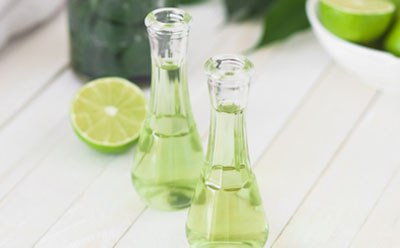Food & Cosmetic Component Standards

For use in the analysis of food and cosmetics and other analytical applications, we offer a comprehensive portfolio comprised of thousands of standards and Certified Reference Materials (CRMs). Our high-purity standards help to keep the food and cosmetic products safe and allow the manufacturers and laboratories to meet all legal regulations for label claims.
Products
Related Resources
- Flyer: Reference Materials for Food and Beverage Testing
Simplify your search for the right product with an overview of the most important product classes relevant for food testing
- Brochure: Mycotoxin Standards
Mycotoxins from fungi like Aspergillus and Fusarium harm health via contaminated food. Over 100 countries set limits; we provide detection standards.
- Flyer: Ensure Accurate Analysis with Marine Toxin Certified Reference Materials
Marine toxins in seafood, worsened by climate change, necessitate monitoring. We offer certified reference materials using advanced LC-MS methods for precise detection.
- Flyer: New TraceCERT® CRM Solution for Tutin
Tutin, a toxic compound from New Zealand's tutu plant, contaminates honey. We offer a new TraceCERT® CRM for Tutin in acetonitrile for precise chromatographic calibration.
- Flyer: Fragrance Allergen Calibration Mixes
We introduce two certified reference material mixtures for testing 57 allergenic fragrances per the new IFRA method, ensuring high quality and reliability.
- Flyer: Reference Materials for Extractables and Leachables Testing
Extractables and Leachables (E&L) can migrate from packaging into pharmaceuticals, risking patient exposure. Comprehensive studies are essential to identify potential compounds.
- Flyer: Reference Materials for Food Packaging Migration Testing
We provide a wide range of analytical standards and certified reference materials for testing Food Contact Materials, ensuring compliance with ISO 17034 and traceability to NIST SRMs.
- Flyer: Food Matrix Reference Materials
This brochure includes a comprehensive list of food matrix reference materials by type, detailing analytes for easy selection based on your needs.
Allergens
Our selection of allergen standards includes analytical standards and CRMs of food allergen proteins and allergenic fragrances compliant to IFRA. Besides the single component standards, we also offer two multi-component CRMs of fragrance allergens and a mix of furocoumarins suitable for IFRA methods..
Amines
Biogenic amines are formed in food products by the bacterial decarboxylation of amino acids. They can be harmful to humans if ingested in high amounts. Our portfolio of amine standards includes analytical standards and CRMs of different amines for the analysis of food, cosmetic, and pharmaceutical products. Primary amines can react with nitroso compounds to form harmful nitrosamines.
Biotoxins and Mycotoxins
We offer a wide range of analytical standards and CRMs for various biotoxins. Our range includes:
- mycotoxins, such as aflatoxins, ochratoxin A, fumonisins, patulin or trichothecene toxins)
- marine toxins (algae toxins) such as paralytic shellfish toxins (PST), okadaic acid, brevetoxins or pinnatoxins
- bacteria toxins (such as microcystins, and cereulide)
- plant toxins (such as pyrrolizidine alkaloids, tropane alkaloids or tutin)
The portfolio includes neat materials, single and multi component solutions, matrix materials, and also a range of isotope labeled analogs.
Colorants
Our portfolio of food colorants or dyes reference materials includes both synthetic (such as diazo dyes) as well as natural (such as chlorophyll or carotenoids) pigments. The range comprises of both the authorized and restricted or banned dyes.
Extractables and Leachables / Food Contact Materials
Extractables and Leachables (E&L) are chemical compounds with the potential to migrate into consumer products or food from the packaging material, tubing, or medical devices. This can result in their exposure to the patients or consumers of food and beverage products. This requires the manufacturers of pharmaceutical products and medical devices to perform extensive E&L studies for the identification of compounds that might leach into the product and, if necessary, assessment of the toxicity of these chemicals. Although there is no finite list of analytes to be tested for, there are certain monomers or additives that are very often detected in the extractables and leachables.
To facilitate the identification and quantification of extractables and leachables, we offer a comprehensive portfolio of reference materials. The list includes more than 200 certified reference materials and analytical standards for commonly found extractables and leachables including specific CRM mixes for system suitability testing, including mixes for MOSH and MOAH testing.
The portfolio also includes many products listed in the positive lists of a big range of global food contact materials regulations, such as the EU regulation 10/2011 for plastics intended to come into contact with food.
Also, we offer a range of reference materials for the most common nitrosamine contaminants
As a result of a collaboration with Waters Corporation, we are listing Ion Mobility values (CCS) for a selection of extractables and leachables which are listed in the Waters Extractables & Leachables UNIFI scientific library.
Flavors and Fragrances
This range includes more than 500 flavor and fragrance standards for use in the quality control of your food and cosmetic products. Our portfolio focuses on the analytical standards of aroma compounds from the “EU positive list of authorized flavoring substances” (EFSA 10/2012). The range includes allergenic compounds according to IFRA methods, flavor enhancers, sweeteners, as well as the fragrance substances of cosmetics, perfumes, and essential oils.
Genetically Modified Organisms
We offer more than 100 matrix materials for the different levels of various genetically modified organisms (GMOs), manufactured by the European Joint Research Center (JRC). Included are matrix materials for genetically modified maize, soya, cotton, rapeseed, potato or sugar beet.
Organic acids
Our portfolio of organic acid standards comprises of neat standards as well as CRM solutions for the chromatographic analysis of food and metabolomics testing.
Sweeteners
We offer a range of analytical standards and certified reference materials for the most common sweeteners present in food and beverage products. The portfolio includes synthetic sweeteners as well as carbohydrate and stevia glycosides.
UV blockers
UV blockers are chemical compounds that have a high capacity of absorbing UV light. They are used in cosmetic products to provide protection from sunlight and to avoid sunburns.
To continue reading please sign in or create an account.
Don't Have An Account?